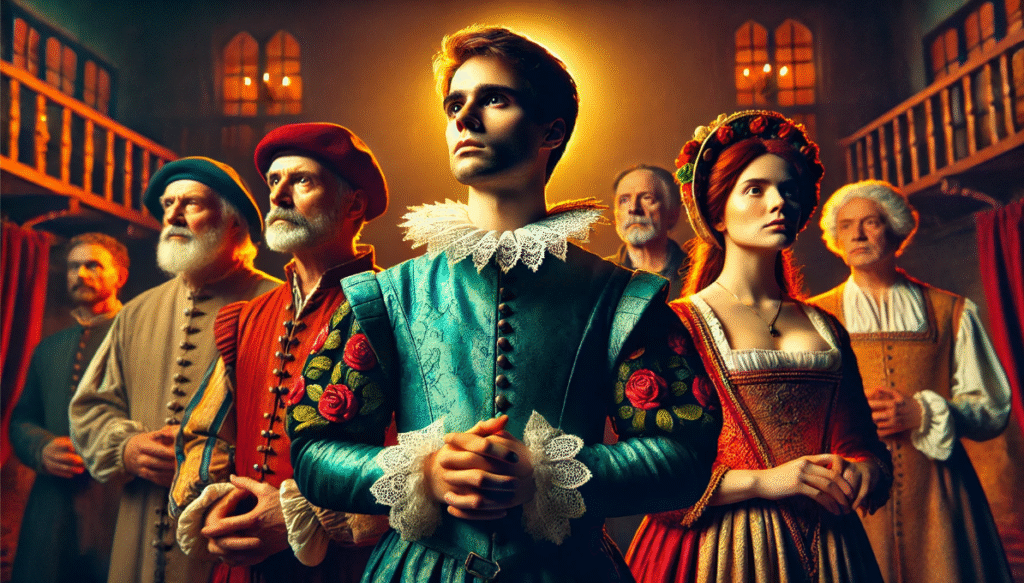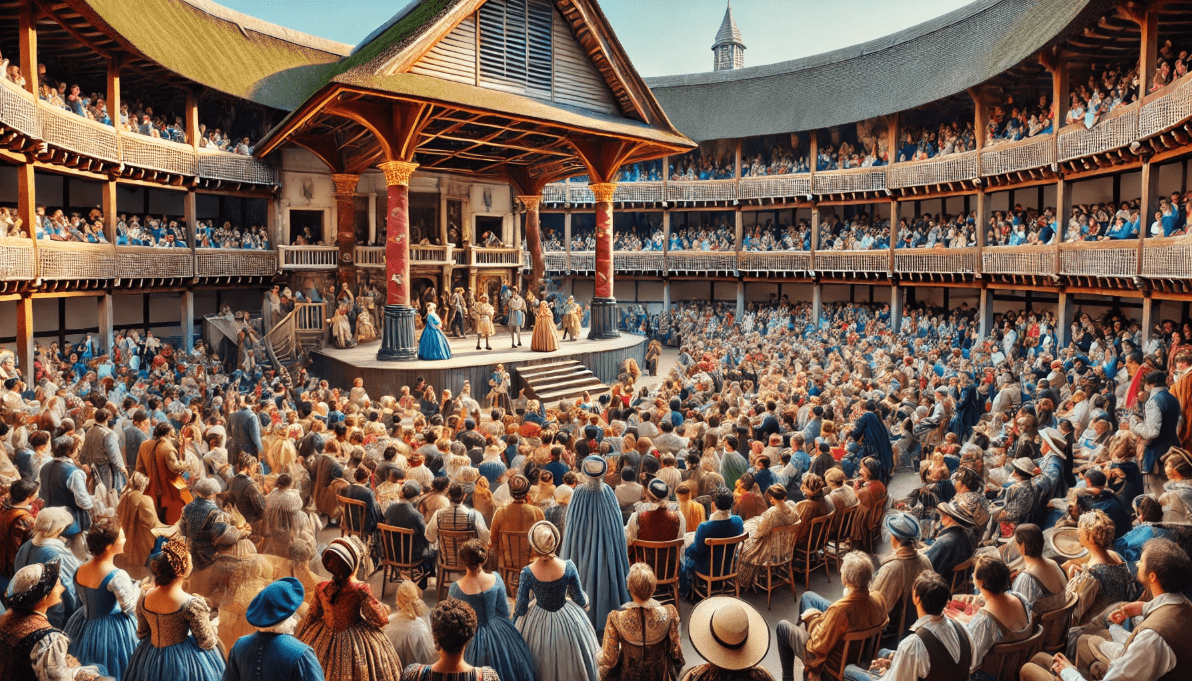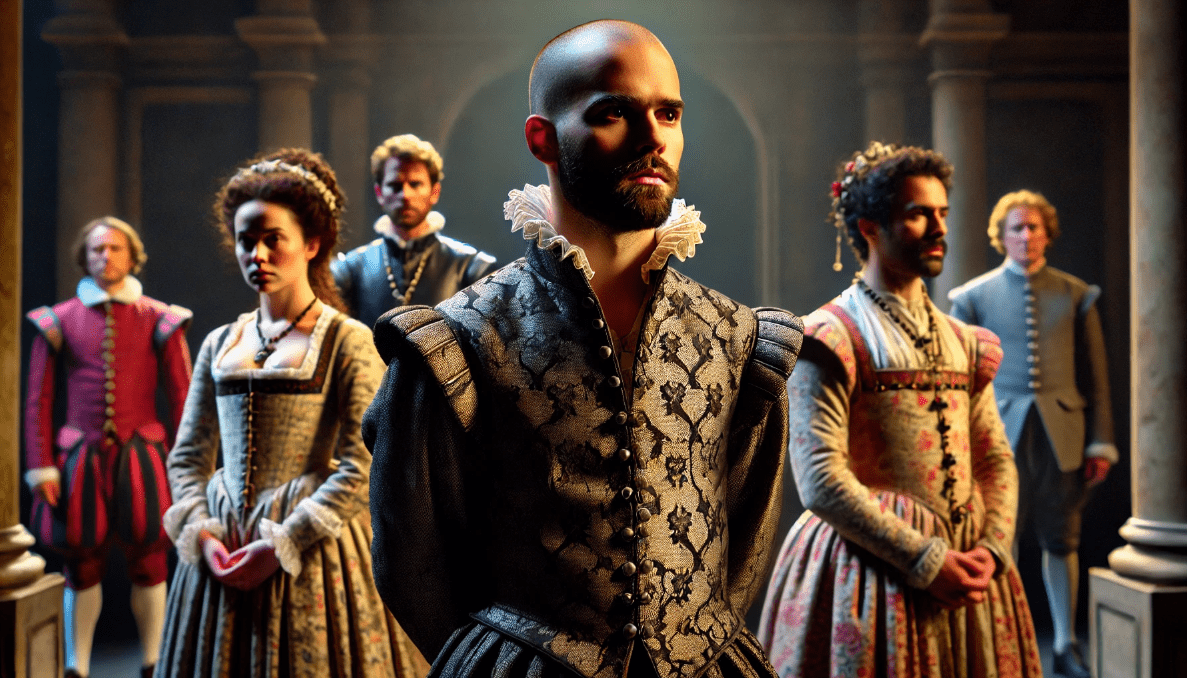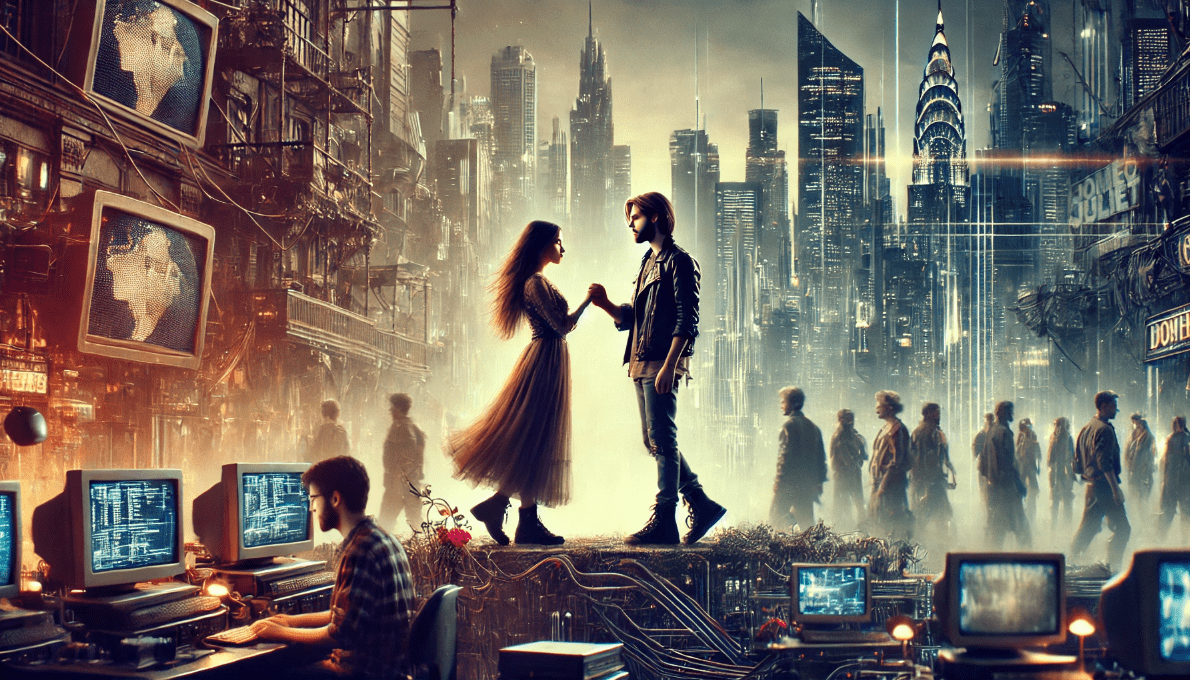
Understanding the Significance of Shakespeare’s Theatre in Literary History: How It Shaped Modern Drama and Literature
Have you ever wondered why Shakespeare’s plays still captivate audiences over 400 years later? 🌟 The significance of Shakespeare’s theatre in literary history is nothing short of revolutionary, and understanding its impact can deepen our appreciation for modern drama and literature. From the dynamic structure of his plays to his unforgettable characters, Shakespeare redefined the very essence of storytelling.
But how exactly did his theatre influence the evolution of drama, and why does it matter today? In this article, we’ll explore how Shakespeare’s groundbreaking work in the Globe Theatre not only transformed theatre in his time but laid the foundation for the world of literature and drama we know today. By the end, you’ll understand the lasting relevance of his theatrical genius and how it continues to shape the stories we read and watch. Keep reading to unlock the secrets behind Shakespeare’s enduring legacy! ✨
Table of Contents
Toggle1: The Historical Context of Shakespeare’s Theatre
To truly appreciate the significance of Shakespeare’s theatre in literary history, it’s important to understand the environment in which he wrote and performed. Shakespeare’s plays were first staged in the late 16th and early 17th centuries, during the Elizabethan and Jacobean eras. These periods were marked by significant cultural, political, and social changes—many of which directly influenced the plays we still celebrate today.

The Globe Theatre: A Hub of Innovation 🌍
One of the most iconic elements of Shakespeare’s theatre was the Globe Theatre, which became the heart of his performances. Located on the banks of the River Thames in London, the Globe was an open-air amphitheater that could hold up to 3,000 spectators. Unlike today’s enclosed theatres, the Globe exposed audiences to the elements—rain or shine! This environment led to a more dynamic, interactive experience where audience reactions (from laughter to gasps) directly influenced the performance.
The Globe’s “thrust stage” design—where the stage extends into the audience—allowed actors to move freely among the spectators, creating a sense of intimacy and immediacy. This was revolutionary compared to earlier theatres where actors were distanced from their audience.
The Power of Public Theatre 🎭
Shakespeare’s plays were not performed in exclusive royal courts, but in public theatres, which made them accessible to people from all walks of life. The diversity of the audience, ranging from the wealthy nobility to working-class “groundlings” standing in front of the stage, created a unique theatrical experience. Shakespeare was able to write in a way that spoke to both educated elites and everyday people, a key reason his works have endured across centuries.
The Influence of the Renaissance 🌟
Shakespeare’s theatre also emerged during the Renaissance, a period of cultural rebirth that emphasized humanism, art, and intellectual exploration. This was a time when classical Greek and Roman ideas were being revived, and the exploration of human nature and emotions took center stage in literature. Shakespeare’s works embraced these themes, blending them with English vernacular, making his plays relatable yet profound.
He drew inspiration from classical tragedies like those by Sophocles and Euripides, while also adopting the Elizabethan love for spectacle, drama, and musical interludes. The result? A blend of the classical and the contemporary that shaped modern drama.
A Changing Society ⚖️
During Shakespeare’s time, England was undergoing significant political and social change. The country was shifting from medieval to modern values, and there was growing interest in individualism, personal ambition, and power dynamics. Shakespeare explored these themes through his unforgettable characters, such as the ambitious Macbeth or the thoughtful Hamlet, whose internal struggles still resonate with audiences today.
This period also saw the rise of English nationalism. Plays like Henry V and Richard III helped define the country’s emerging sense of identity. Shakespeare’s theatre thus became a mirror for the society of his time, capturing both the complexity and the universal aspects of human experience.
2: Shakespeare’s Theatre and Its Impact on Modern Drama

Shakespeare’s theatre didn’t just entertain—it changed the way we understand drama and storytelling. The impact of Shakespeare’s theatre on modern drama is profound, influencing everything from character development to plot structure. Let’s dive into the key ways in which his groundbreaking approach still shapes the theatre we know and love today. 🎭
1. The Rise of Complex Characters 👥
One of the most significant contributions of Shakespeare’s theatre was his ability to create multi-dimensional characters. Before Shakespeare, characters in plays were often simple, one-dimensional figures—heroes, villains, or comic relief. Shakespeare broke these boundaries with characters like Hamlet, Lady Macbeth, and Othello, who are all flawed, complex, and deeply human.
By portraying characters with inner conflicts, moral dilemmas, and emotional depth, Shakespeare set the standard for modern drama. Playwrights today often follow this template, focusing on the psychological development of their characters and the tension between their desires and actions. This has become a key element of modern storytelling, both in theatre and film.
2. The Three-Act Structure 📝
Shakespeare’s plays also helped solidify the three-act structure that dominates modern drama. While not every Shakespeare play follows this structure rigidly, many of his works are divided into three parts: the setup, the conflict, and the resolution. This framework has been widely adopted by playwrights, filmmakers, and screenwriters.
For example:
- Act 1 sets up the characters and conflicts.
- Act 2 builds tension and introduces complications.
- Act 3 resolves the conflict, often with a dramatic or emotional climax.
This structure provides a clear, engaging flow for audiences and remains the backbone of modern plays and screenwriting. 🎬
3. Use of Soliloquies and Dialogue 🎤
Shakespeare is famous for his soliloquies—those powerful, introspective speeches where characters express their deepest thoughts. One of the most famous examples is Hamlet’s “To be, or not to be” speech, where Hamlet wrestles with life, death, and moral choices. These soliloquies allow characters to speak directly to the audience, revealing their inner struggles and motives.
This technique of using soliloquies to explore characters’ thoughts has deeply influenced modern plays and films. Even in contemporary drama, characters often break the fourth wall to share their inner thoughts with the audience, which makes them more relatable and real. ✨
4. Blending Genres and Themes ⚡
Shakespeare was a master at blending genres—comedy, tragedy, history, and romance—into a single play. Take A Midsummer Night’s Dream, where romance, magic, and comedy intersect, or Macbeth, a tragedy that explores ambition, fate, and guilt.
This ability to blend different genres and themes gave his plays a sense of versatility and richness, a trait modern playwrights still adopt. Contemporary dramas often mix different genres (e.g., dark comedy or tragicomedy) to appeal to a broader range of emotions and to explore more complex ideas.
5. Universal Themes that Resonate Today 🌍
Shakespeare’s exploration of universal themes—love, jealousy, betrayal, ambition, and power—resonates with people across time and cultures. His characters are often driven by their desires and flaws, making their stories relatable even centuries later. The emotional and moral dilemmas they face mirror issues we still confront today.
Modern dramas continue to explore these timeless themes, using them as a lens through which to examine human nature. Whether it’s a stage play, TV show, or film, the themes Shakespeare introduced are still relevant and are often the foundation of contemporary storytelling.
Shakespeare’s Theatre: A Blueprint for Modern Drama 🎬
Shakespeare’s impact on modern drama cannot be overstated. His innovative character development, genre-blending techniques, and universal themes have laid the groundwork for the drama we see today. Whether you’re watching a contemporary play or enjoying a blockbuster film, you can trace many of the storytelling techniques back to the legacy of Shakespeare’s theatre. His works not only shaped drama but also taught us to embrace complexity, both in characters and in the themes we explore on stage and screen.
By recognizing how these techniques shaped modern drama, you can better appreciate the timeless appeal of Shakespeare’s theatre and its lasting influence on storytelling in the 21st century. 🌟
3: How Shakespeare’s Theatre Shaped Literature Beyond Drama
While Shakespeare is best known for his plays, his influence extends far beyond the realm of theatre. His works have had a lasting impact on literature in multiple genres, from poetry to novels and even modern films. Let’s explore how Shakespeare’s theatre shaped literature beyond the stage and continues to influence writers today. 📚✨

1. Poetry: The Power of Language and Form 📝
Shakespeare’s influence on poetry is undeniable, particularly through his sonnets. With 154 sonnets that explore themes of love, time, beauty, and mortality, Shakespeare set the standard for what a sonnet could be. His ability to blend emotion with intricate language and structure has inspired poets for centuries.
Beyond sonnets, Shakespeare’s command over iambic pentameter (the meter he used in much of his work) introduced a rhythm that became a cornerstone in English poetry. Many modern poets still borrow from his mastery of language, rhythm, and form. Shakespeare showed how poetry could be used not just for beauty, but also to express deep emotions and universal truths, influencing writers from John Milton to T.S. Eliot.
2. Novels and Narrative Influence 📖
Shakespeare’s influence stretches deep into the world of narrative literature. His complex plots, layered characters, and exploration of human emotions have inspired countless novels. His themes of ambition, revenge, love, and betrayal found in works like Macbeth and Othello can be seen in novels across genres.
Writers like Charles Dickens, Jane Austen, and Leo Tolstoy drew from Shakespeare’s complex character development and his focus on societal issues. For example, Shakespeare’s exploration of class conflicts, as seen in King Lear, echoes in the works of Dickens, who frequently examined the struggles between rich and poor in Victorian society. Even modern authors like Haruki Murakami and Margaret Atwood have acknowledged Shakespeare’s influence in shaping their own storytelling methods.
3. Shakespeare’s Archetypes in Modern Fiction 🌟
Shakespeare’s theatre introduced a range of archetypal characters—the ambitious villain, the tragic hero, the conflicted lover—who continue to shape modern fiction. These archetypes are used in everything from classic novels to contemporary TV shows and movies.
- The Tragic Hero: Think of Hamlet or Macbeth—characters driven by internal conflicts that lead to their downfall. Modern tragic heroes like Walter White in Breaking Bad or Tony Stark in the Marvel Cinematic Universe are clear descendants of Shakespeare’s unforgettable characters.
- The Complex Villain: Villains like Iago in Othello or Lady Macbeth are still being reimagined in today’s stories. Modern fiction, from literature to film, often features villains with multifaceted motives and psychological depth, inspired by Shakespeare’s rich character portrayals.
These characters help to create engaging plots and develop moral questions that resonate with audiences across different genres.
4. Shakespeare in Film and Television 🎬
Shakespeare’s impact on modern media is unmistakable. His works are continuously adapted for the screen, either directly or through influences on contemporary narratives. Films like West Side Story (a retelling of Romeo and Juliet) and The Lion King (inspired by Hamlet) show how Shakespeare’s stories transcend time and culture.
Even if a modern movie doesn’t directly adapt a Shakespearean play, the themes and character dynamics often echo his influence. Think of the conflicted antihero in movies like The Godfather or The Dark Knight, both of which share qualities with Shakespeare’s complex protagonists like Hamlet and Macbeth. Similarly, the exploration of betrayal, revenge, and ambition in these films can trace its roots back to Shakespearean drama.
5. Shakespeare’s Influence on Contemporary Fiction Writing 🖋️
Even in contemporary fiction, Shakespeare’s techniques still shine through. Writers use his methods of blending dialogue and action to keep readers engaged. His frequent use of dualities, where two contrasting characters or themes are explored side by side, is a technique that appears in novels such as George Orwell’s 1984 or J.K. Rowling’s Harry Potter series.
Moreover, Shakespeare’s ability to mix humor with tragedy is an approach modern writers adopt to create more well-rounded, realistic narratives. Whether it’s a dark comedy or a tragic romance, writers still incorporate Shakespeare’s blend of tone and theme to balance light and dark elements within their stories.
Shakespeare’s Timeless Influence on Literature 🌍
From poetry to novels to film, Shakespeare’s influence on literature goes far beyond his plays. His language, themes, character archetypes, and narrative structure have shaped storytelling in ways that are still relevant today. Whether you’re reading classic literature or watching a contemporary film, you’ll find traces of Shakespeare’s genius woven throughout.
By understanding how Shakespeare’s theatre impacted literature beyond drama, we can gain a deeper appreciation for how his works have stood the test of time and continue to inspire writers, filmmakers, and creatives worldwide. 📚🎥
4: The Lasting Influence of Shakespeare’s Theatre in Today’s World

Shakespeare’s influence is far from being a thing of the past. Even today, his theatre continues to shape modern culture, education, and even technology. The reach of Shakespeare’s legacy goes beyond just books and performances—his work is deeply woven into our everyday lives, whether we realize it or not. Let’s explore how Shakespeare’s theatre remains relevant and continues to impact the world today. 🌍✨
1. Shakespeare in Modern Education 📚
Shakespeare’s works are still a cornerstone of literary education worldwide. From middle school to university, his plays are studied for their rich language, complex characters, and universal themes. But why is Shakespeare still taught today?
- Critical Thinking: Studying Shakespeare sharpens critical thinking skills. His plays often tackle deep philosophical questions about life, death, morality, and human nature, encouraging students to think critically about the world around them.
- Language Mastery: Shakespeare’s ability to play with language, metaphors, and wordplay helps students develop a stronger understanding of English vocabulary and grammar.
- Cultural Understanding: Learning Shakespeare helps students appreciate not only the history of literature but also the evolution of storytelling, which is crucial for understanding the context of other works across time.
Even in digital classrooms, Shakespeare’s works are adapted into multimedia formats, making them accessible to a new generation of learners. 🖥️
2. Shakespeare in Modern Theatre 🎭
Shakespeare’s theatre continues to thrive on modern stages around the world. His plays are regularly performed in theatres, and his influence can be seen in the performances of contemporary actors. Here’s how Shakespeare still impacts theatre today:
- Adaptations and Reinterpretations: Many modern plays and musicals are inspired by Shakespeare’s works. For instance, West Side Story is a retelling of Romeo and Juliet, and The Lion King draws from Hamlet. These adaptations prove how timeless his stories are and how easily they can be reimagined for different settings and eras.
- Innovative Productions: Directors continue to experiment with Shakespeare’s works, integrating modern technologies like projection mapping, immersive theatre, and interactive performances to create unique and engaging experiences for audiences.
These adaptations breathe new life into Shakespeare’s plays, proving that his works are not just for academic study but for real-world entertainment too. 🎬
3. Shakespeare’s Influence in Popular Culture 🌟
Shakespeare’s influence is all around us in popular culture, whether we notice it or not. Here’s how his theatre continues to shape TV shows, movies, and even advertising:
- Movies and TV Shows: Many of today’s beloved TV shows and films borrow heavily from Shakespearean themes and character archetypes. Characters like the tragic hero in The Godfather or the ambitious anti-hero in Breaking Bad are direct descendants of Shakespeare’s characters, such as Macbeth or Hamlet.
- Quotes in Daily Life: Phrases like “All that glitters is not gold” (The Merchant of Venice) or “To thine own self be true” (Hamlet) have become part of everyday speech. His quotes transcend their original context, often being used in advertisements, social media posts, and inspirational speeches.
Shakespeare’s influence is so ingrained in our culture that many of us interact with it daily—often without even realizing it. 🌍
4. Shakespeare and Technology: The Digital Age 🌐
In the age of technology, Shakespeare’s works have found new life through digital platforms and innovations:
- Online Streaming: Performances of Shakespeare’s plays are readily available on streaming platforms like YouTube, Netflix, and Amazon Prime, bringing his works to global audiences. Some productions even offer interactive experiences, allowing viewers to explore Shakespeare’s world in new ways.
- Virtual Reality (VR): Some theatre companies are experimenting with VR to recreate the Globe Theatre experience, offering audiences an immersive way to experience Shakespeare’s plays as if they were there in the 1600s.
- AI and Shakespeare: In the digital world, Shakespeare’s language is being studied and even replicated by AI tools. For example, tools like ChatGPT are trained on Shakespeare’s writing style, allowing creators to generate new content in his voice, whether it’s for creative writing, marketing, or even educational purposes.
Shakespeare’s works continue to adapt to the digital age, connecting with new audiences and blending traditional storytelling with cutting-edge technology. 🤖
Shakespeare’s Theatre: A Legacy that Endures 🌟
The lasting influence of Shakespeare’s theatre in today’s world is undeniable. His works have transcended their historical context to shape education, entertainment, and even technology. Whether through modern theatre productions, cultural references in films, or adaptations in the digital age, Shakespeare’s legacy continues to thrive and evolve.
In the fast-paced world we live in, it’s amazing to realize that Shakespeare’s timeless themes and innovative storytelling techniques are just as relevant today as they were 400 years ago. By exploring the lasting influence of his theatre, we gain a deeper understanding of how art and literature can cross time, remain vital, and continue to inspire new generations of creators and thinkers. 🌟
5: Actionable Insights: How to Appreciate Shakespeare’s Theatre Today
Shakespeare’s theatre may be centuries old, but his influence remains alive and well in today’s world. If you’re looking to connect with his work and deepen your understanding of its significance, here are some actionable steps to help you appreciate Shakespeare’s theatre in a modern context. 📚🎭
1. Attend a Live Performance (or Watch One Online) 🎥
The best way to appreciate Shakespeare’s theatre is to experience it live! If you’re able to, attend a live production at your local theatre. The energy of a live performance, especially one of Shakespeare’s plays, brings his language to life in a way that reading alone can’t.
- Tip: Many theatres now offer online streaming of their performances, so if attending in person isn’t an option, you can still enjoy a virtual experience of Shakespearean theatre from the comfort of your home. Platforms like National Theatre Live and Shakespeare’s Globe On Screen provide access to world-class productions. 🎬
2. Watch Film Adaptations of Shakespeare’s Plays 🎥
There are plenty of modern film adaptations of Shakespeare’s works, some set in contemporary times or in entirely new genres. Films like Baz Luhrmann’s Romeo + Juliet and Joss Whedon’s Much Ado About Nothing offer fresh takes on his classic plays while maintaining the core themes and language.
- Tip: When watching these adaptations, pay attention to how modern filmmakers adapt the original material to resonate with today’s audiences. Notice the universal themes of love, betrayal, ambition, and conflict, and reflect on how Shakespeare’s ideas continue to shape our storytelling.
3. Read Annotated Texts or Watch Read-Alouds 📖
If Shakespeare’s language feels daunting, start with annotated versions of his plays. These versions offer footnotes and explanations that help clarify old words, idioms, and cultural references.
- Tip: There are also many read-aloud resources available online, including YouTube videos and apps. Hearing the plays read aloud will help you better appreciate the rhythm, wordplay, and dramatic power of Shakespeare’s language.
4. Join a Local or Online Shakespeare Group 🗣️
One of the best ways to deepen your appreciation for Shakespeare’s theatre is through discussion. Join a book club or online forum that focuses on Shakespeare’s works. Engaging with others who share your interest will help you gain new insights into his plays, characters, and themes.
- Tip: If you’re feeling adventurous, consider joining a community theatre group that performs Shakespeare. It’s a fun way to engage with the material while gaining hands-on experience with the language and themes of the plays. Many amateur theatre groups welcome newcomers to try out acting in Shakespearean productions.
5. Explore Shakespeare’s Themes in Modern Contexts 🌍
Shakespeare’s plays are rich with timeless themes—love, power, jealousy, ambition, and revenge—that are just as relevant today as they were in his time. To truly appreciate his theatre, consider how these themes play out in the world around you.
- Tip: Take time to read or watch modern stories (books, movies, TV shows) that tackle similar themes. For example, if you’re interested in jealousy (as seen in Othello), you might explore modern films or literature that delve into this topic. Recognizing Shakespeare’s influence in contemporary works can deepen your understanding of how his themes still shape modern narratives.
6. Engage with Shakespeare Through Technology 📱
If you’re someone who prefers digital learning, there are many apps and online resources dedicated to making Shakespeare’s works more accessible. Apps like Shakespeare Pro and websites like Shakespeare’s Globe offer interactive tools to help you dive deeper into the text, explore the history of his theatre, and understand his wordplay.
- Tip: Try listening to audiobooks of Shakespeare’s plays. This will help you connect with the natural flow and cadence of his language, making it easier to appreciate the beauty and complexity of his writing.
Embrace Shakespeare’s Theatre in the Modern World 🌟
Shakespeare’s theatre is not just a relic of the past; it’s a living, breathing part of modern culture that continues to inspire, educate, and entertain. By engaging with his work through live performances, modern adaptations, or digital resources, you can deepen your understanding of how his ideas still shape the world of drama and literature today.
Shakespeare’s theatre is more than just a historical curiosity—it is a living, breathing influence that continues to shape the world of literature, drama, and culture today. From the intricate language and complex characters to the universal themes of love, ambition, and betrayal, his works transcend time and continue to inspire artists, writers, and creators worldwide.
By exploring Shakespeare’s theatre, whether through live performances, modern adaptations, or personal study, we not only connect with his rich legacy but also gain a deeper understanding of the timeless human experiences he captured. His ability to blend language, emotion, and storytelling into unforgettable experiences has made his work relevant for over 400 years and will undoubtedly continue to resonate for generations to come.
As you dive deeper into the world of Shakespeare, remember that his theatre is not confined to the past—it is alive in the stories we tell, the films we watch, and the conversations we have. Embrace his legacy, and you’ll find yourself seeing the world through a new lens, one that celebrates the enduring power of great storytelling. 🎭📚
Frequently Asked Questions (FAQs)
1. Why is Shakespeare’s theatre so important in literary history?
Shakespeare’s theatre revolutionized drama by introducing complex characters, sophisticated plots, and universal themes that remain relevant today. His innovative use of language, emotional depth, and the three-act structure set the stage for modern storytelling in both theatre and literature.
2. How did Shakespeare’s theatre impact modern drama?
Shakespeare’s plays influenced the structure, character development, and thematic depth of modern drama. His ability to blend genres, explore complex human emotions, and use soliloquies to reveal inner thoughts laid the foundation for contemporary playwrights and filmmakers.
3. What are the key contributions of Shakespeare’s theatre to literature?
Shakespeare expanded the scope of literary genres, enriching poetry, narrative fiction, and even modern films. His works influenced novelists, poets, and screenwriters, with his themes, character archetypes, and dramatic techniques being widely adopted across multiple mediums.
4. How did Shakespeare’s theatre influence character development?
Shakespeare introduced deep, multi-dimensional characters that were morally complex and internally conflicted. This shift paved the way for modern writers to create more relatable and psychologically complex characters in literature and theatre.
5. How did Shakespeare’s theatre shape modern storytelling?
Shakespeare’s blending of tragedy, comedy, and history helped modernize the narrative structure. His focus on human emotions and moral dilemmas continues to inspire storytellers to explore similar themes of love, power, and identity in both dramatic and literary works today.
6. What makes Shakespeare’s theatre relevant today?
Shakespeare’s universal themes—love, jealousy, ambition, and betrayal—continue to resonate in modern storytelling, from films to TV shows. His innovative theatrical techniques, such as soliloquies and the use of layered characters, have shaped both contemporary drama and literature.
7. Why are Shakespeare’s plays still performed today?
Shakespeare’s plays remain popular because of their timeless themes and emotional depth. They continue to be relevant due to their exploration of the human condition, and modern adaptations make them accessible to today’s audiences in various forms, including theatre, film, and literature.
8. How can I engage with Shakespeare’s works today?
You can engage with Shakespeare’s works by attending live performances, watching modern adaptations of his plays, reading annotated versions, or joining a local theatre group. Many online resources, audiobooks, and apps also make it easier to explore his plays and their significance in the modern world.
